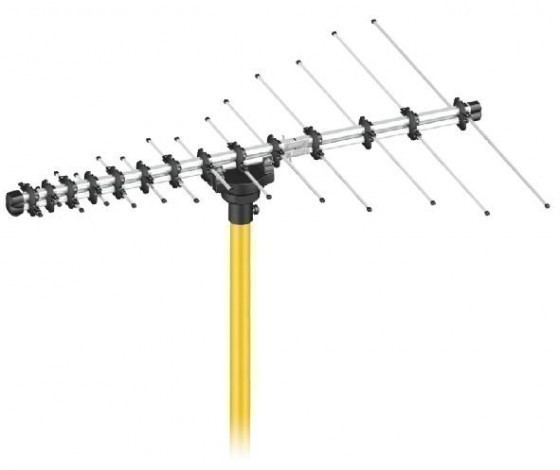Outdoor TV Antennas
An outdoor TV antenna is one that receives radio signals from satellites or Earth-based radio transmitters. Outdoor TV antennas often receive a better signal than indoor TV antennas because they are in direct sight of a transmitter without interference from walls, electrical wiring, or any electronic devices. Outdoor TV antennas range dramatically in design and usually receive VHF (Very High Frequencies) or UHF (Ultra High Frequencies).
How Outdoor TV Antennas Work
An outdoor TV antenna, like every other type of antenna, is a transducer that converts electromagnetic waves into electricity and electricity into electromagnetic waves. As a result, antennas can be used as both receivers and transmitters. However, a typical outdoor TV antenna only receives electromagnetic waves. When a radio signal is emitted from a radio transmitter or satellite, the radio waves induce an electrical current in antennas. This electricity, depending on the radio waves’ frequency, is converted into audio and video that is then displayed on the user’s television set.
Applications
Outdoor TV antennas have many purposes, but mostly receive television signals. They pick up radio broadcasts and transmit radio signals as well. The two main types of outdoor TV antennas are referred to as “antenna” and “aerial.” An antenna is made of metal while an aerial is made of wire.
Advantages
Outdoor TV antennas have several important advantages that indoor TV antennas do not. Outdoor TV antennas have better sight of the transmitter, allowing for better signal quality. They also operate at higher frequencies and at a further range than indoor TV antennas. In fact, people who live too far away from a radio transmitter cannot receive radio signals without an outdoor TV antenna.
Disadvantages
Outdoor TV antennas are more vulnerable to wind, rain, sun damage, and animal attacks than indoor antennas. They are also more difficult to adjust than indoor TV antennas because they are usually mounted on rooftops or the sides of buildings.


Comments - No Responses to “Outdoor TV Antennas”
Sorry but comments are closed at this time.